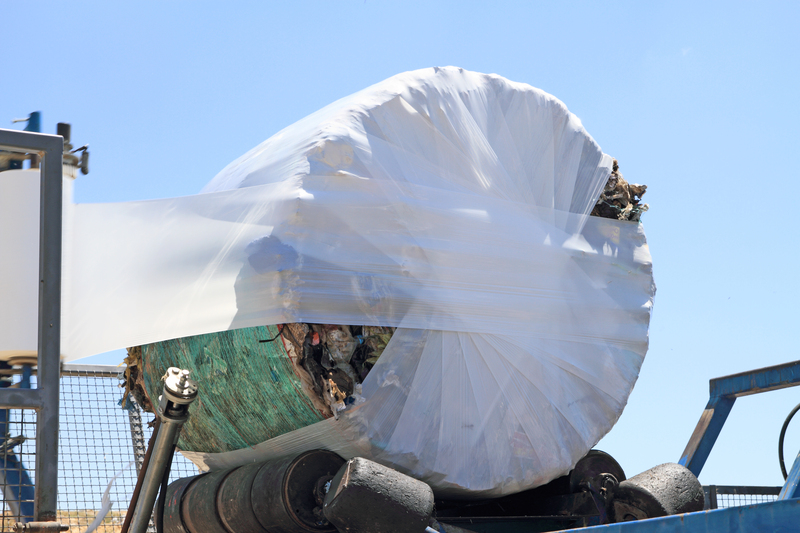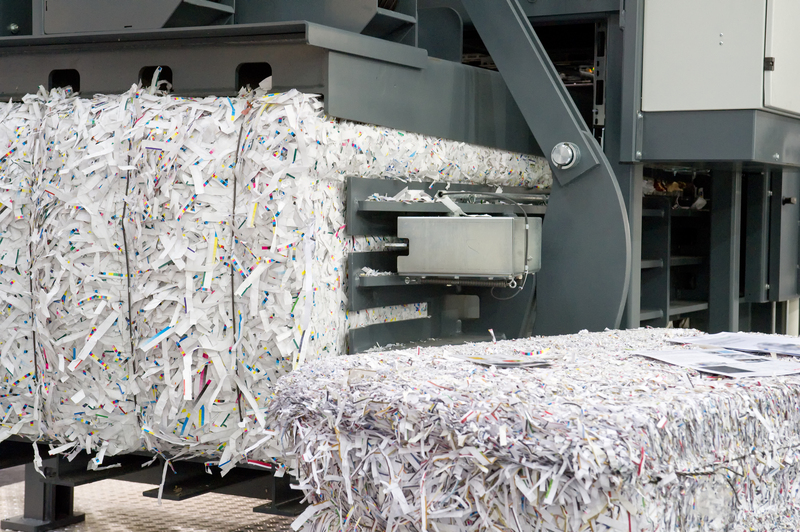Can Technology Save the Earth from Microplastic Pollution?
Microplastic pollution has emerged as a daunting environmental challenge, infiltrating terrestrial, freshwater, and ocean ecosystems. As these tiny plastic particles invade our food chains, water systems, and even the air we breathe, the world is waking up to the urgent need for effective solutions. The critical question echoing among scientists, manufacturers, and policymakers alike is: Can technology save the Earth from microplastic pollution? In this comprehensive article, we examine the multifaceted role of innovative technology in tackling the microplastic crisis, exploring cutting-edge developments as well as the obstacles still to be overcome.

What Are Microplastics and Why Are They Harmful?
Microplastics are plastic particles smaller than five millimeters in diameter. They originate from two main sources:
- Primary microplastics - Intentionally produced small particles like microbeads used in cosmetics and industrial abrasives.
- Secondary microplastics - Resulting from the degradation of larger plastic debris, such as bottles, bags, and fishing nets, due to sunlight exposure, friction, and other environmental factors.
Microplastics pose a significant health risk to ecosystems and humans alike. Marine animals ingest these particles, mistaking them for food, which can lead to starvation, poisoning, and bioaccumulation of harmful substances up the food chain. Humans, in turn, consume microplastics through seafood, drinking water, and even from the air, raising concerns about digestive, hormonal, and respiratory health effects.
The Scale of Microplastic Pollution
According to recent studies, our planet is awash with microplastics:
- Over 14 million metric tons of microplastics are estimated to be sitting on the ocean floor.
- Annual microplastic emissions to rivers and oceans are projected to be in the hundreds of thousands of tonnes.
- Microplastics have been detected in the Arctic, the deepest ocean trenches, and even in rainfall, showing their global reach.
The Role of Technology in Tackling Microplastics
As awareness of microplastic contamination grows, researchers and entrepreneurs are developing innovative technological solutions to prevent, capture, and remediate microplastics. Below, we explore state-of-the-art approaches and their real-world potential.
1. Advanced Filtration and Separation Technologies
One of the most promising ways technology is fighting microplastic pollution is through filtration systems designed to capture these minute particles before they reach natural waters.
- Washing Machine Filters: A major source of microplastics is synthetic fibers shed during laundry. Companies like XFiltra and Cora Ball have created filters for washing machines that trap up to 90% of microfibers.
- Wastewater Treatment Plant Upgrades: Most urban sewage passes through treatment plants, which can be enhanced with advanced membrane filtration and electrocoagulation techniques to intercept microplastics efficiently.
- Industrial Effluent Processing: Nanotechnology-driven filtration systems can remove even the tiniest plastic fragments from industrial wastewater before release.
2. Innovative Cleanup Technologies for Oceans and Rivers
Removing microplastics already in the environment demands creative solutions:
- The Ocean Cleanup - This ambitious project has developed solar-powered floating barriers and mobile river interceptors that capture plastic waste, including microplastics, in some of the world's most polluted waterways.
- Robotic and Autonomous Drones: Some startups have designed aquatic robots equipped with fine-mesh nets and suction devices to skim microplastics from water surfaces and below.
- Magnetic Extraction: Researchers have experimented with attaching magnetic coatings to microplastics, enabling their removal using magnets from contaminated water.
3. Biodegradable and Alternative Materials
Beyond removal, a crucial part of solving the microplastics problem is prevention through material innovation.
- Bioplastics: Derived from renewable biomass sources like corn starch or sugarcane, bioplastics degrade more quickly and are less likely to fragment into persistent microplastics.
- Developing Plastics That Degrade Completely: Some companies have created polymers infused with enzymes or additives that enable plastics to break down into harmless organic substances rather than into micro- and nanoplastics.
- Labelling and Tracking: Using technology to track the lifecycle of plastic products can encourage manufacturers to design for sustainability, reducing reliance on problematic materials.
4. Artificial Intelligence and Data Analytics
AI and machine learning are proving valuable in the battle against microplastics:
- Identifying Hotspots: AI algorithms analyze satellite data and global monitoring to identify areas with high levels of microplastic accumulation.
- Predictive Modelling: Sophisticated software can forecast where microplastics will accumulate, helping to deploy cleanup resources more strategically.
- Sorting and Recycling: Advanced automated systems use vision and AI to sort plastics in waste streams more effectively, improving recycling rates and lowering the input of plastics that might become microplastics.
5. Microbial and Enzymatic Solutions
An exciting frontier in microplastic remediation involves harnessing nature itself:
- Plastic-Eating Bacteria: Certain bacteria and microorganisms have been identified that can break down types of plastic into harmless compounds.
- Enzyme Engineering: Scientists are developing highly efficient enzymes that can rapidly decompose plastic polymers, with the hope of deploying them at scale in the near future.
The Limitations and Challenges of Technological Solutions
Despite these advancements, it is important to recognize the limitations of relying solely on technology to fix the microplastic crisis:
- Scale and Cost: To be effective, new technologies must be affordable, scalable, and globally deployed – a major hurdle especially for poorer regions.
- Complexity of Microplastic Pollution: Microplastics vary in size, shape, chemical makeup, and environmental context, making one-size-fits-all solutions impractical.
- Downstream vs. Upstream Solutions: Removing microplastics after they've entered the environment is vastly more challenging than preventing their creation in the first place.
- Potential Unintended Consequences: For example, magnetic or chemical clean-up methods could disrupt natural ecosystems or leave harmful residues.
- Regulatory and Behavioral Barriers: Success requires not just technology, but regulatory support, industry buy-in, and behavioral change among consumers worldwide.
Integrating Technology with Policy and Prevention
To maximize the benefits of technology in combating microplastic pollution, experts emphasize a multi-tiered approach:
- Source Reduction: Enact regulations to phase out single-use plastics, microbeads, and problematic polymer additives at the production stage.
- Incentivize Innovation: Offer grants and tax breaks to companies investing in microplastic mitigation technologies and sustainable materials.
- Global Monitoring and Standards: Implement standardized protocols for monitoring microplastics in the environment using advanced sensors and AI-based analytics.
- Promote Consumer Awareness: Use digital platforms, labels, and apps to inform the public about microplastic risks and mitigation options.
- Encourage International Cooperation: Establish treaties and joint research projects to ensure that global technology transfer and adoption are equitable and effective.
Innovations on the Horizon: What Does the Future Hold?
The race is on to invent next-generation solutions for microplastic contamination:
- Self-Cleaning Waterways: Research is underway into "smart" waterways that use solar- or wind-powered filtration buoys and drones working autonomously to continuously clean rivers, lakes, and harbors.
- Bio-inspired Materials: Scientists are studying mussels, oysters, and other filter feeders whose natural mechanisms can inspire cleaner, more effective filtration devices.
- Smart Packaging: Internet of Things (IoT) enabled packaging can help track and recall plastics before they are lost to the environment, limiting future microplastic generation.
- Public-Private Partnerships: Collaborations between governments, NGOs, and tech startups are accelerating the pace of discovery and deployment for anti-microplastic technologies.

How You Can Contribute to Solving Microplastic Pollution
While technological breakthroughs are essential, individual choices matter too. Here are steps everyone can take to reduce personal microplastic impact:
- Opt for natural fibers like cotton or bamboo instead of synthetic textiles.
- Install filters in your washing machine to capture microfibers.
- Avoid cosmetics and cleaning products containing microbeads.
- Use reusable bags, bottles, and containers to cut down on plastic waste.
- Support brands and policies that promote microplastic-free production and advanced recycling technologies.
Conclusion: Can Technology Save Us From Microplastic Pollution?
So, can technology save the Earth from microplastic pollution? The answer is complex, but hopeful. Technological innovation is creating powerful tools to intercept, remove, and ultimately even degrade microplastics polluting our planet. However, technology alone is not a magic bullet; its real power is unlocked when combined with sound policy, industry responsibility, international cooperation, and public engagement.
By supporting advanced filtration systems, eco-friendly materials, AI-driven detection, and biodegrading enzymes, while also changing consumption habits, humanity can set itself on a path to a cleaner, healthier, and more sustainable future, less threatened by the scourge of microplastic debris.
The fight against microplastics is far from over, but with technology as our ally, a microplastic-free Earth is within reach.